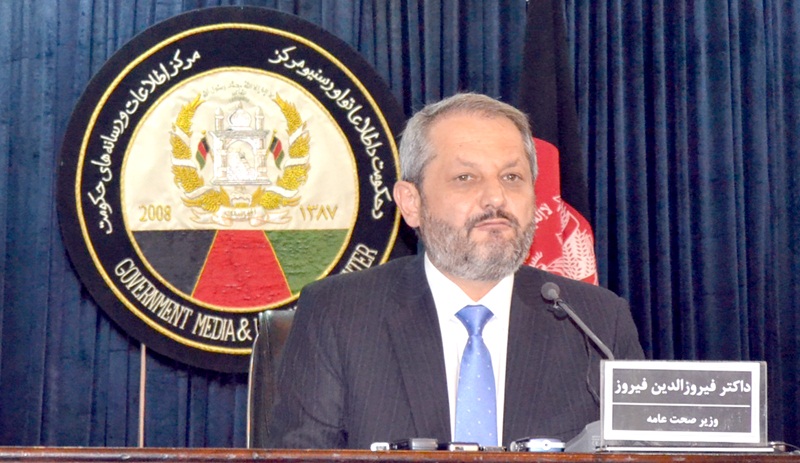AT-KABUL: Ministry of Public Health (MoPH) on Saturday said that Afghanistan annually imports worth $400 million drugs from foreign countries, but still 40 percent of the medicines are imported through illegally channels.
Minister of Public Health, Feruzoddin Feroz, said that 40 percent of drugs are imported illegally which includes low quality medicines as well. “The drugs imported illegally are substandard. In many cases these drugs carries the brand name of famous pharmaceutical companies,” he said.
Feroze said that the low quality drugs imported through illegal ways created a series of challenges for patients, adding that the ministry is unable to put an end to the illegal importation of these drugs.
He stressed that struggle for prevention of illegal drugs is not only the responsibility of the MoPH but it is also the duty of all relevant organizations to organize their efforts and stop the drugs smuggling. Most of the medicines are smuggled into the country from Pakistan.
“Prevention of illegal drugs across the border is difficult for us. We need cooperation of police, customs department and other relevant organizations to stop the illegal importation of poor-quality medicines,” he mentioned.
There are 200 private companies which import drugs from the neighboring countries. According to the ministry, Afghanistan imports 92 percent of medicines from these countries.
According to the data provided by the health ministry, Afghanistan imports 45 percent drugs from Pakistan, 15 percent from Iran and 25 percent from India.
Feroz said that the ministry is working on a regulation to establish the National Medicine Company in order to import quality drugs and pave ground for healthy competition.
He said the ministry also started work on establishment of the drugs and food control centers in Kabul, Herat, Balkh, Nangarhar, Khost, and Kandahar provinces to check the quality of medicines and food, imported from abroad.
Currently, there is only one drug and food control center in Kabul. Traders bring samples from all ports to the center for test.
Dissatisfaction of public over poor quality of diagnostic and treatment, poor quality of medicines in the markets, lack of facilities in the hospitals, financial constraints, poor management and unfair provision of healthcare services are the main problems counted by the ministry public health.
Officials at the public health ministry promised to resolve these problems, claiming that they had focused on these issues and people would soon have relief.
 Afghanistan Times
Afghanistan Times




